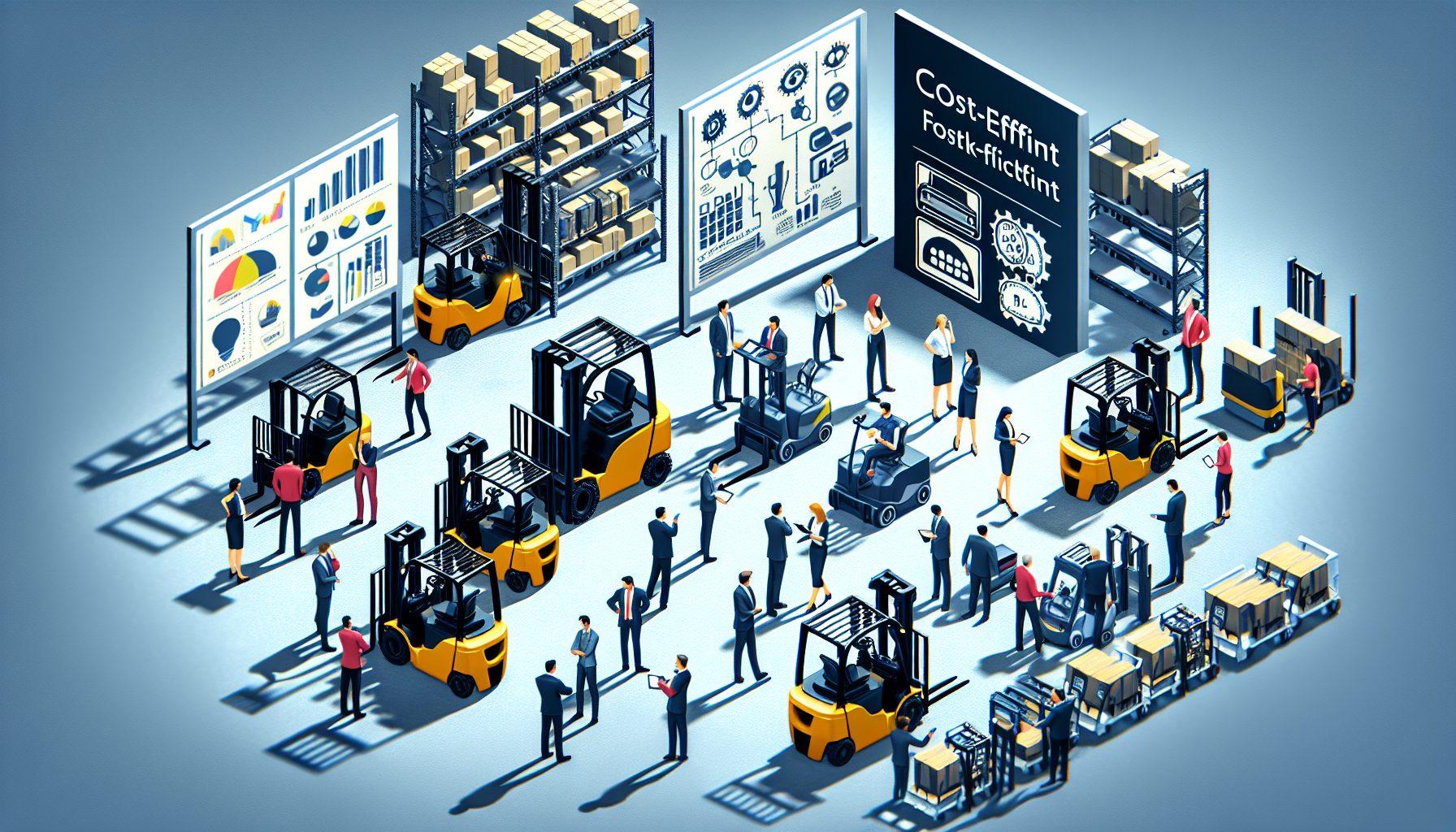In today’s fast-paced warehouse operations, maximizing efficiency and cost-effectiveness is crucial. And one of the key components in achieving optimal warehouse performance is having a well-managed forklift fleet. Forklifts are an essential tool for material handling, and choosing cost-efficient forklifts can significantly impact your bottom line.
The Importance of Cost-Efficient Forklifts
When it comes to optimizing your warehouse operations, every aspect matters, including the equipment you use. Forklifts play a significant role in improving productivity, reducing errors, and ensuring the safety of your workforce. But investing in inefficient forklifts can lead to higher operating costs and reduced productivity.
Cost-efficient forklifts are designed to maximize productivity while minimizing operating costs. These forklifts are equipped with advanced features, enhanced energy efficiency, and durable components that can withstand the demands of a busy warehouse environment. By choosing cost-efficient forklifts, you can lower your fuel consumption, reduce maintenance and repair costs, and improve overall operational efficiency.
When selecting forklifts for your fleet, there are several factors to consider to ensure you choose the most cost-effective options:
1. Identify Your Warehouse Needs
Before investing in any forklift, it is crucial to understand your warehouse requirements. Assess the type of loads you handle, the average load weight, and the maximum lift height required. Additionally, consider the size of your warehouse aisles and any special requirements, such as narrow aisles or outdoor operations.
Understanding your specific warehouse needs will help you determine the type of forklifts that are best suited for your operations and prevent you from overspending on unnecessary features or capabilities.
2. Consider Fuel Efficiency
Fuel consumption is a significant cost factor when it comes to operating a forklift fleet. Forklifts can run on various fuel types, including diesel, electric, and propane. Each fuel type has its own advantages and disadvantages.
Electric forklifts are known for their energy efficiency and low operating costs. They are ideal for indoor use and can provide long operating hours on a single charge. Electric forklifts are also quieter and produce zero emissions, making them an environmentally friendly choice. However, they may not be suitable for heavy-duty applications or outdoor operations.
Diesel forklifts, on the other hand, offer higher torque and lifting capacity, making them suitable for heavy-duty applications. They are also more durable and can withstand harsh working conditions. However, they are noisier, emit pollutants, and require regular refueling and maintenance.
Propane forklifts offer a balance between electric and diesel forklifts. They are versatile, suitable for both indoor and outdoor use, and provide longer operating hours compared to electric forklifts. Propane forklifts also have lower fuel costs compared to diesel forklifts and require less maintenance.
Consider your operational needs, available infrastructure, and future plans to determine the most cost-efficient fuel type for your forklift fleet.
3. Evaluate Total Cost of Ownership
Choosing cost-efficient forklifts goes beyond the initial purchase price. It is important to evaluate the total cost of ownership over the lifespan of the forklifts. This includes factors such as maintenance and repair costs, spare parts availability, and the reputation of the manufacturer.
Look for forklift brands and models known for their durability, reliability, and ease of maintenance. Consider the availability and cost of spare parts, as well as the manufacturer’s warranty and after-sales support.
Additionally, factor in the expected maintenance and repair costs based on the forklift’s average lifespan and usage. Remember that cost-efficient forklifts may require a higher upfront investment but can provide long-term cost savings through reduced maintenance and repair expenses.
4. Prioritize Operator Safety
Ensuring the safety of your forklift operators is crucial. Look for forklift models that prioritize operator safety through features such as ergonomic designs, enhanced visibility, and stability controls.
Consider features like operator cabins with comfortable seating and adjustable controls, as well as clear display panels for easy monitoring of vital information. Anti-slip surfaces, shock-absorbing features, and stability systems can also contribute to safer forklift operations.
Investing in forklifts with advanced safety features can help reduce accidents, minimize injuries, and avoid costly damages to both your products and warehouse infrastructure.
5. Explore Fleet Management Solutions
Managing a forklift fleet efficiently can be challenging without the right tools and systems in place. Consider implementing fleet management solutions, such as those offered by HCO Innovations.
Fleet management solutions can help you monitor and optimize your forklift fleet’s performance, track maintenance schedules, and identify opportunities for cost savings. These solutions utilize advanced technologies, such as telematics and data analytics, to provide real-time insights into your fleet’s operations.
By implementing a fleet management solution, you can enhance safety, productivity, efficiency, and cost-effectiveness within your warehouse operations.
Conclusion
Choosing cost-efficient forklifts for your fleet is a strategic decision that can have a significant impact on your warehouse operations. By identifying your specific warehouse needs, considering fuel efficiency, evaluating the total cost of ownership, prioritizing operator safety, and exploring fleet management solutions, you can make informed decisions that result in improved productivity, reduced costs, and a safer work environment.
Investing in the right forklifts is an investment in the success and long-term profitability of your warehouse operations.

